現代法治觀念從何而來?——探訪《大憲章》的歷史封印地
《大憲章》(原拉丁語:Magna Carta;英語:The Great Charter)最初封印(國王的封印,即得其認可)於1215年,距今已超過800年,是現代法治觀念的基礎。事源主要是,當時的英格蘭國王約翰(King John)施政無道、濫用權力(那時有多黑暗?據說,在約翰死後,當時的編年史家Matthew Paris寫道:「black as is Hell, John's presence there makes it blacker still」),使在其轄下眾等封建貴族(Baron)大為不滿,最終聯合起來對抗之,而結果就是迫使國王約翰同意《大憲章》中的條款,用以規範國王的權力,使其不能任意妄為。
當然,歷史是複雜的,《大憲章》的發展、執行和影響亦渡過了不少風浪、起起伏伏的不同階段。例如,創作於三百幾年後的莎士比亞,在其關於國王約翰的作品裡,就完全沒有提及《大憲章》;是什麼原因呢?我參考的資訊給我的印象是,似乎在莎士比亞的時期,《大憲章》不見得受到重視。(但會否另有原因就有待考究了。)
無論如何,《大憲章》中包含現代自由、人權、法治等理念的初形,深深影響著後來的發展,美國的《獨立宣言》、聯合國的《世界人權宣言》便是受其影響的經典例子。與該些理念初形相關的《大憲章》條款例如有(Runnymede and Magna Carta,2019,The National Trust):
- The English Church shall be free, and shall have its rights undiminished, and its liberties unimpaired (Clause 1)
- The City of London shall enjoy all its ancient liberties and free customs (Clause 13)
- Earls and barons shall be fined only by their equals, and in proportion to the gravity of their offence (Clause 21)
- No free man shall be seized or imprisoned ... except by the lawful judgement of his equals or by the law of the land (Clause 39)
- To no one will we sell, to no one deny or delay right or justice (Clause 40)
我自己特別欣賞和感興趣的是,那段國王約翰和封建貴族衝突的歷史,為何會衍生出《大憲章》——算是較文明地處理衝突的方法吧——而並非簡單直接的武力衝突,導致血流成河、生靈塗炭?整件事是如何發生的?有什麼前因?誰起著關鍵的作用?⋯⋯
做了以上的簡介,我們可以看看照片了。
英國的Runnymede是《大憲章》的歷史封印地,是那些封建貴族迫使國王約翰同意其條款的地點,現在設有英國National Trust的景點,最重要的固然是紀念《大憲章》的景點,是一個在1957年由The American Bar Association設立的紀念碑,上面刻上的字是:「TO COMMEMORATE MAGNA CARTA」和「SYMBOL OF FREEDOM UNDER LAW」。
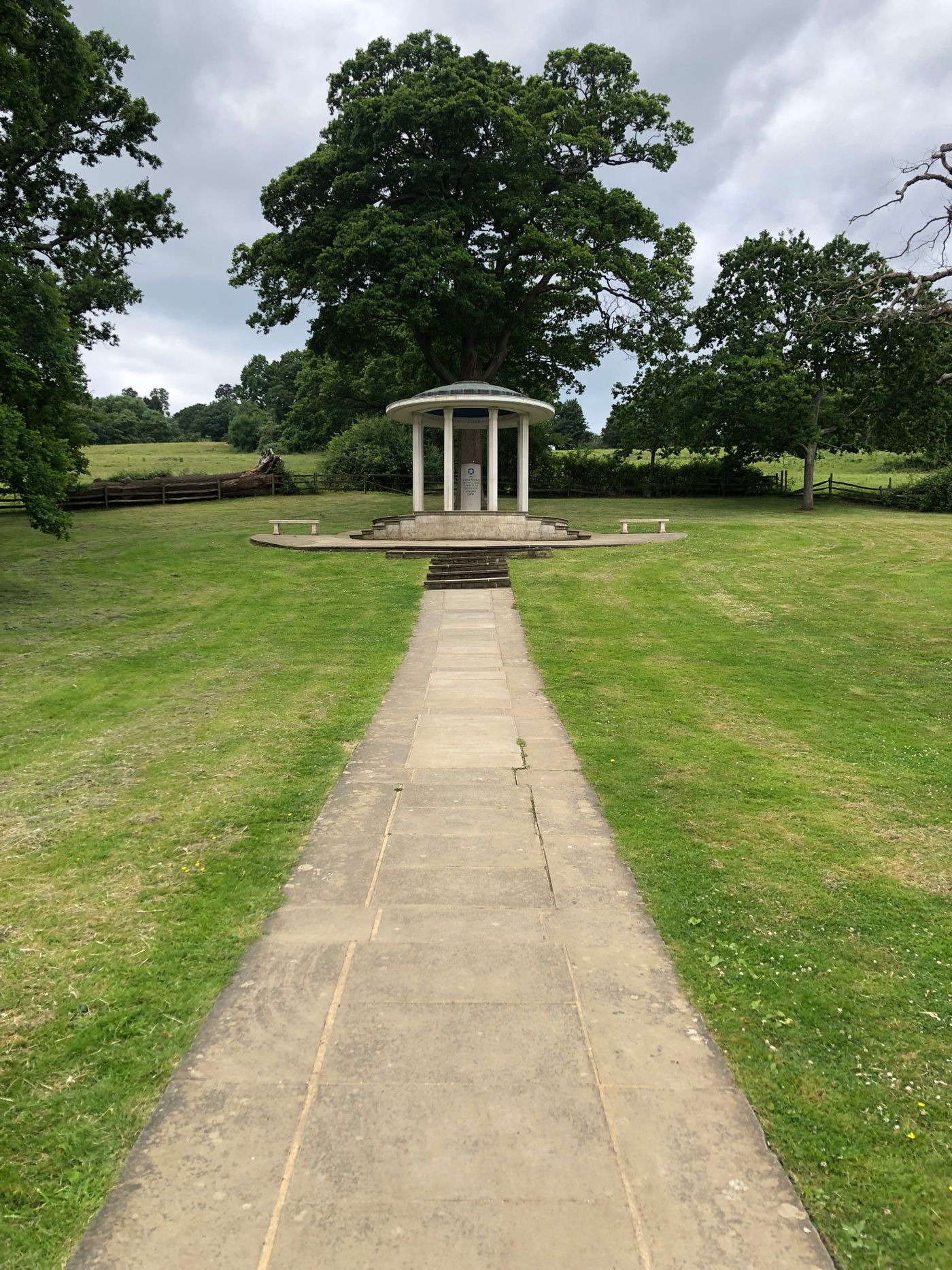
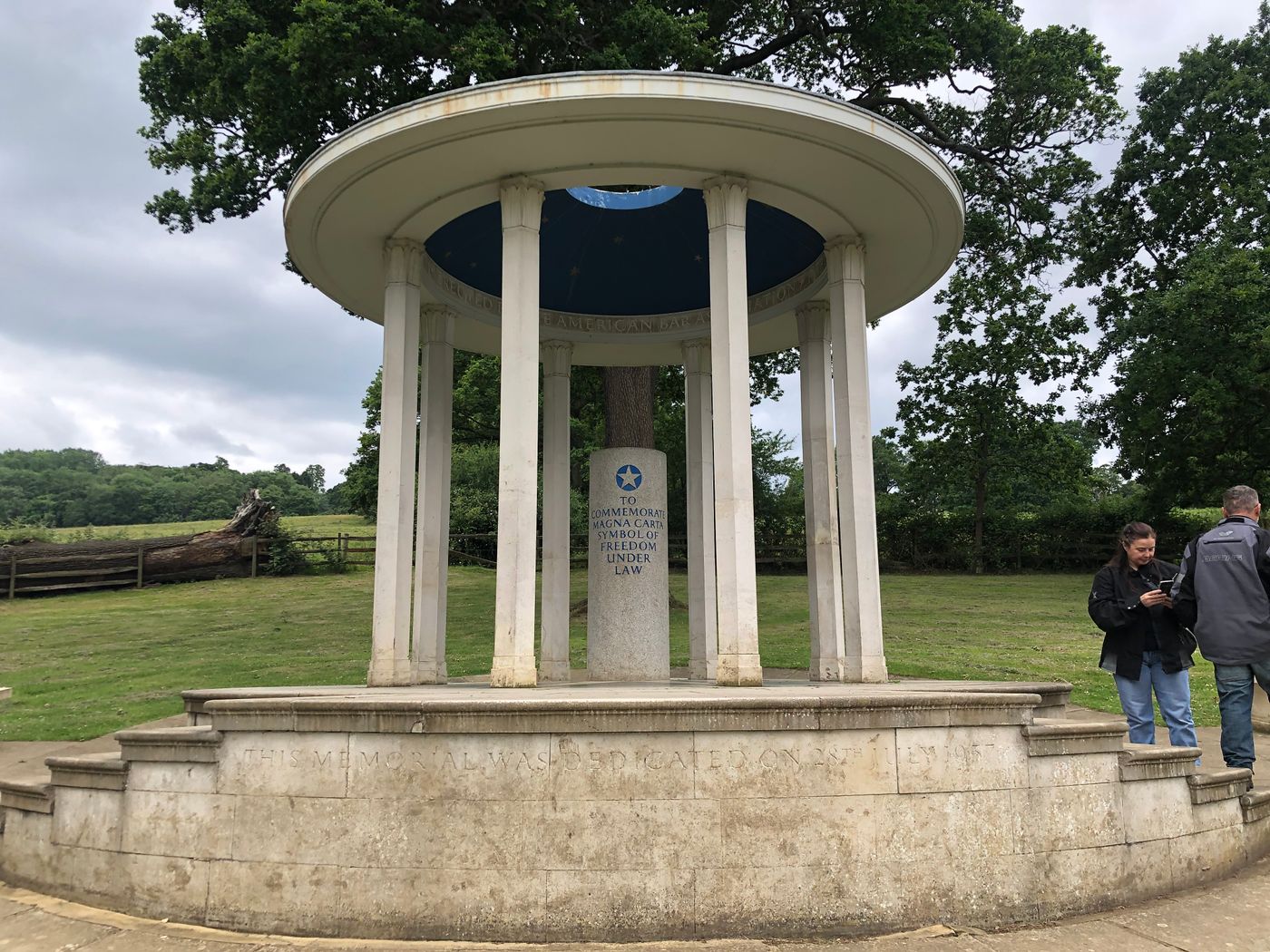

自1957年至今,The American Bar Association 四次回來重申他們堅守《大憲章》精神——以法治捍衛自由——的承諾。
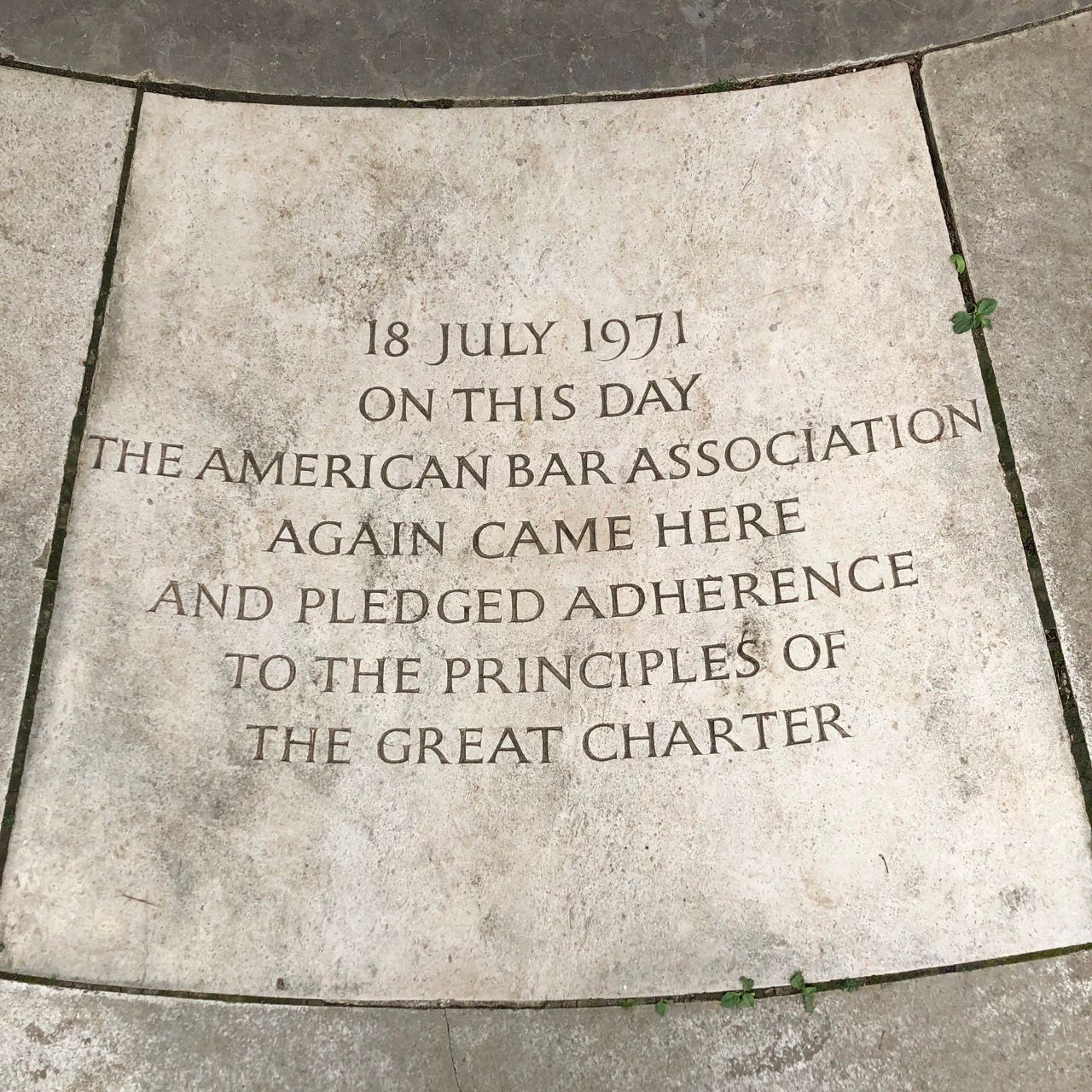

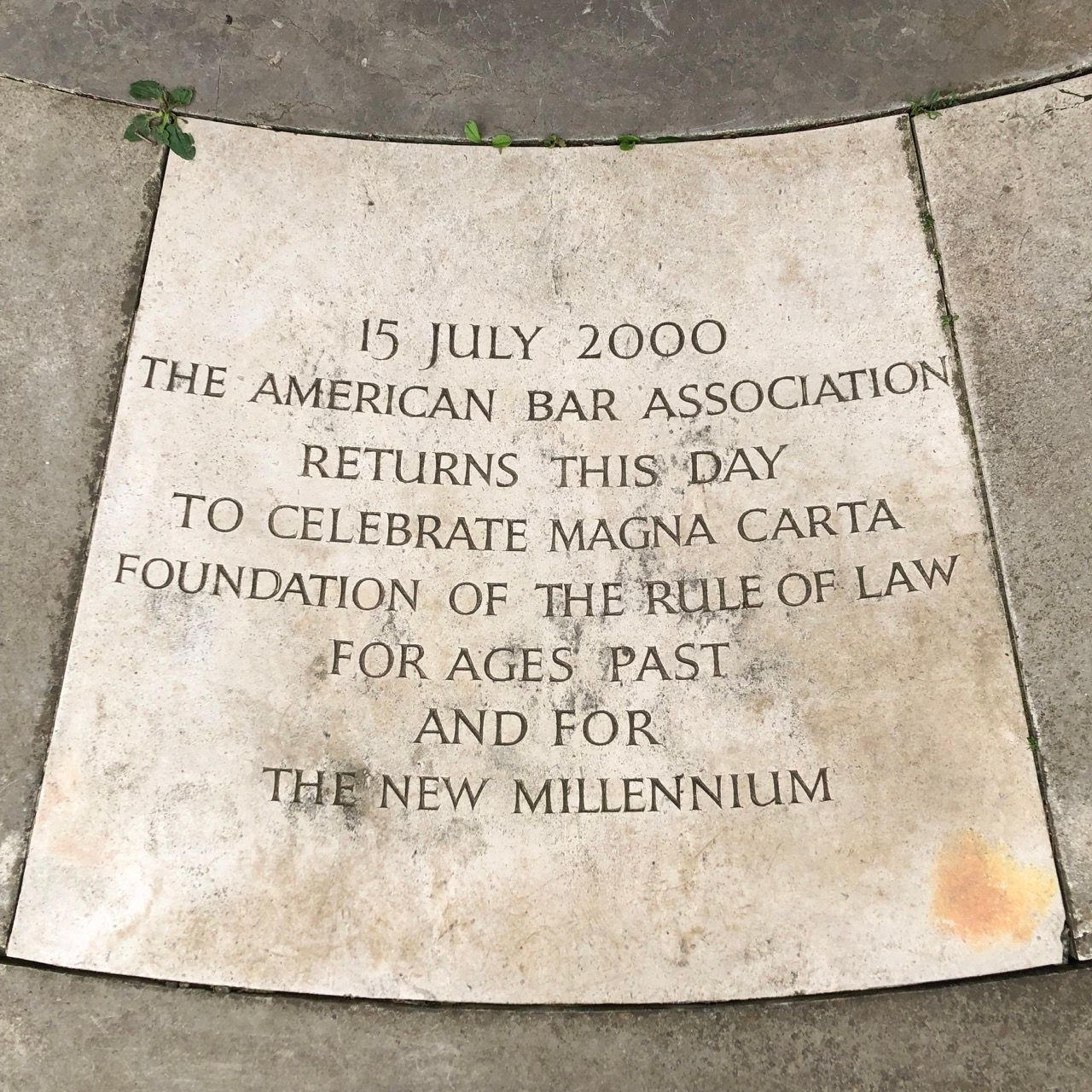
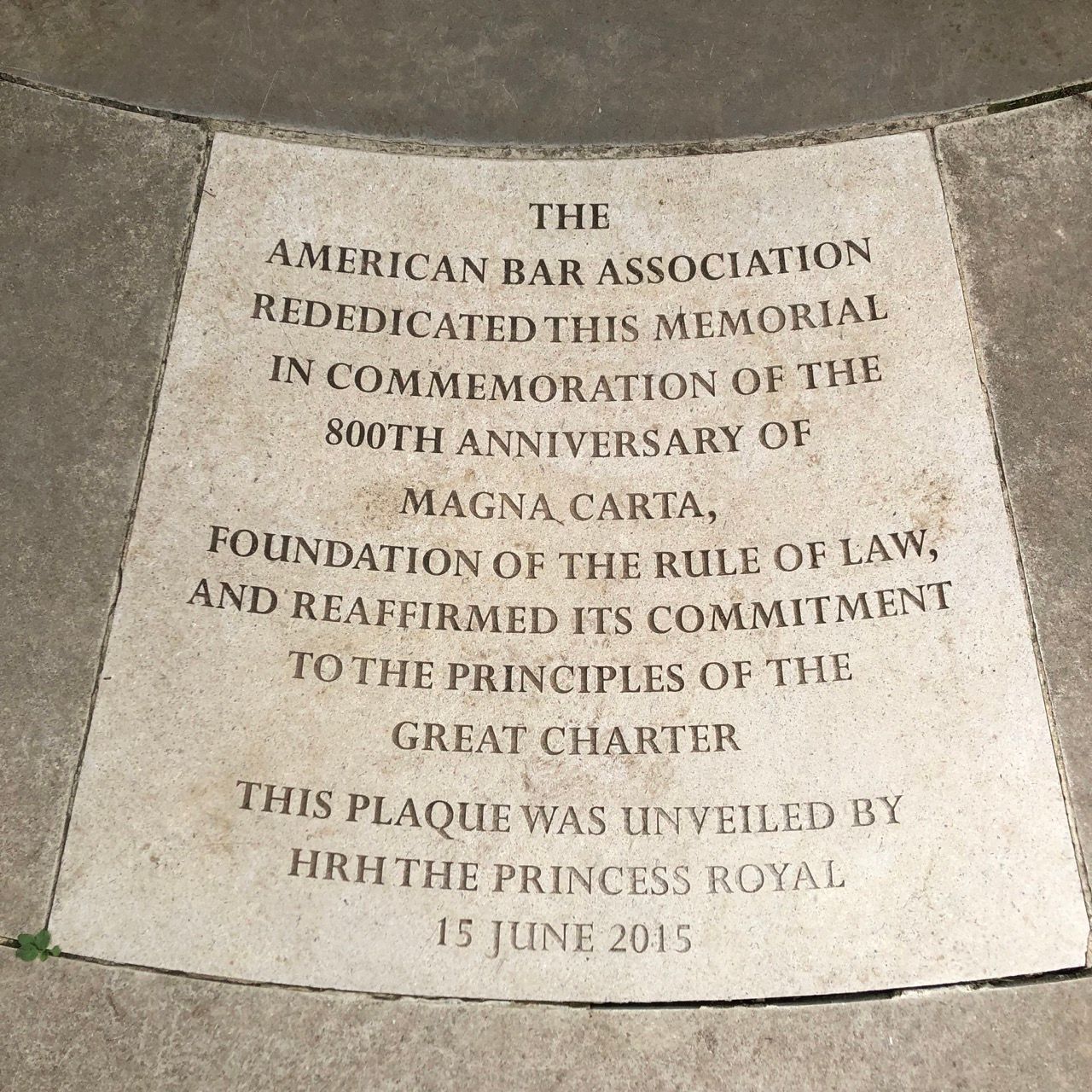
除了紀念《大憲章》外,Runnymede還有其他的紀念景點,如美國總統John F. Kennedy的紀念碑。
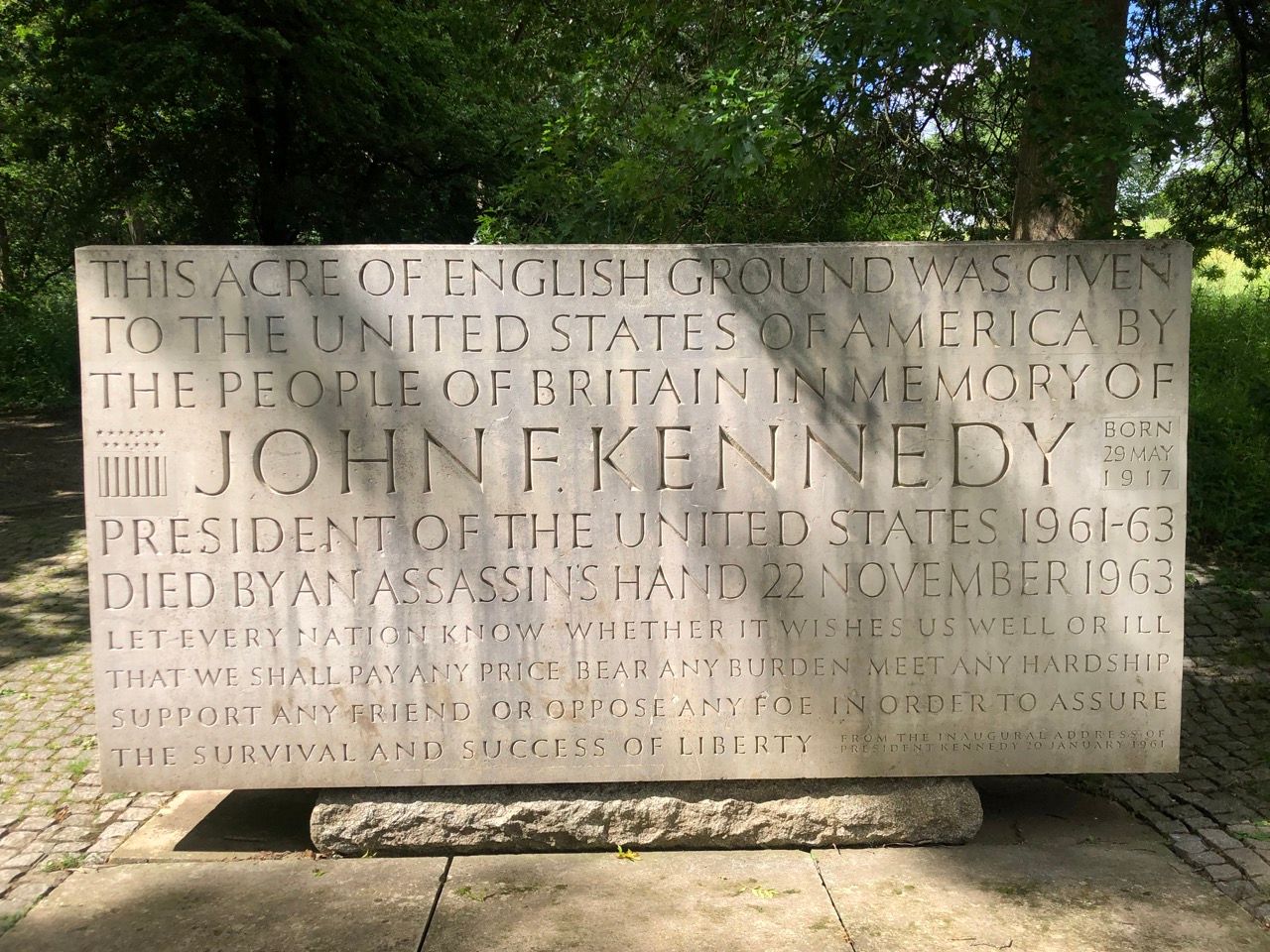
另外,Runnymede還有些與《大憲章》有關(紀念其價值、反思其意義等)的藝術品,如Writ in Water。


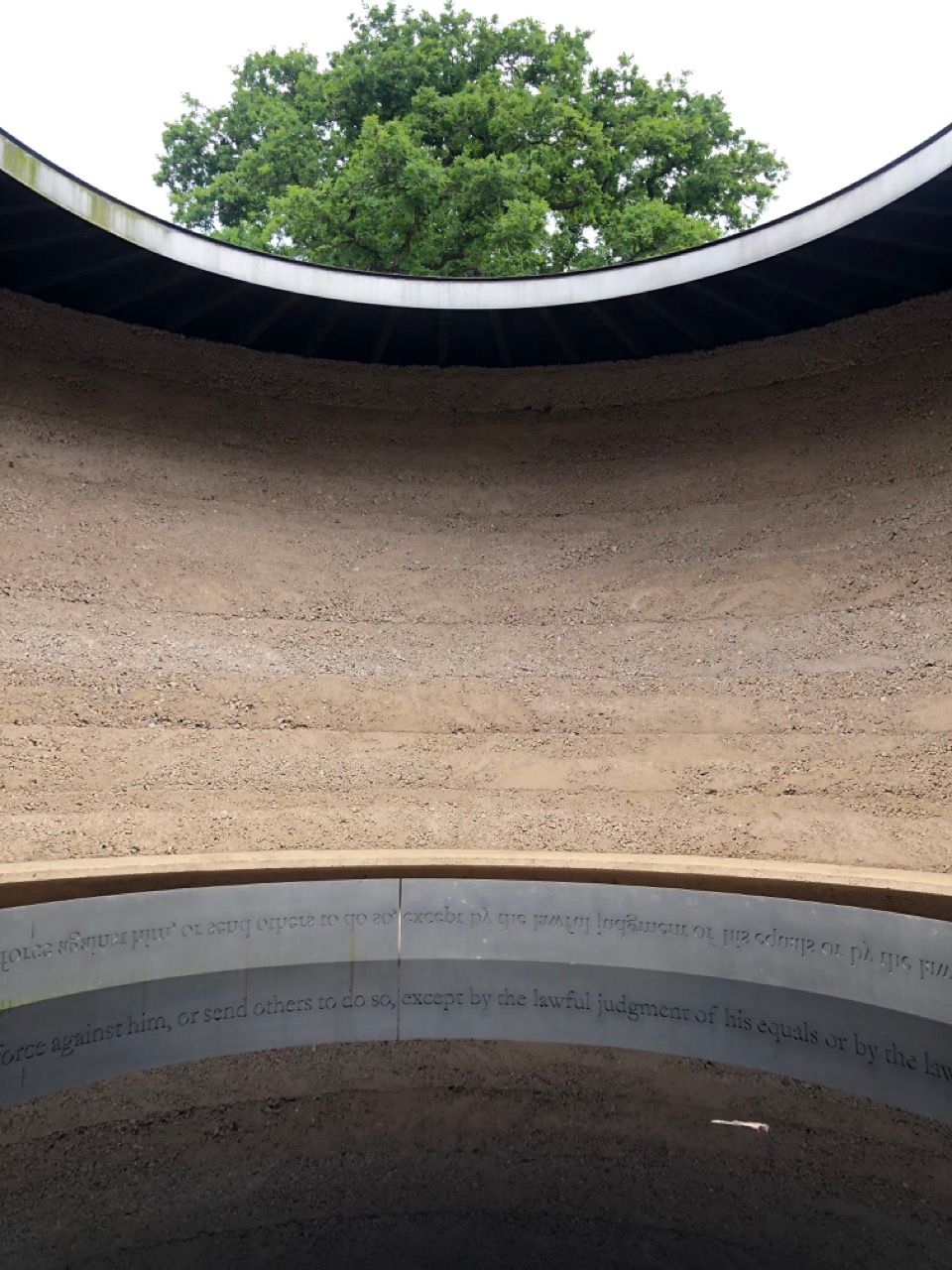
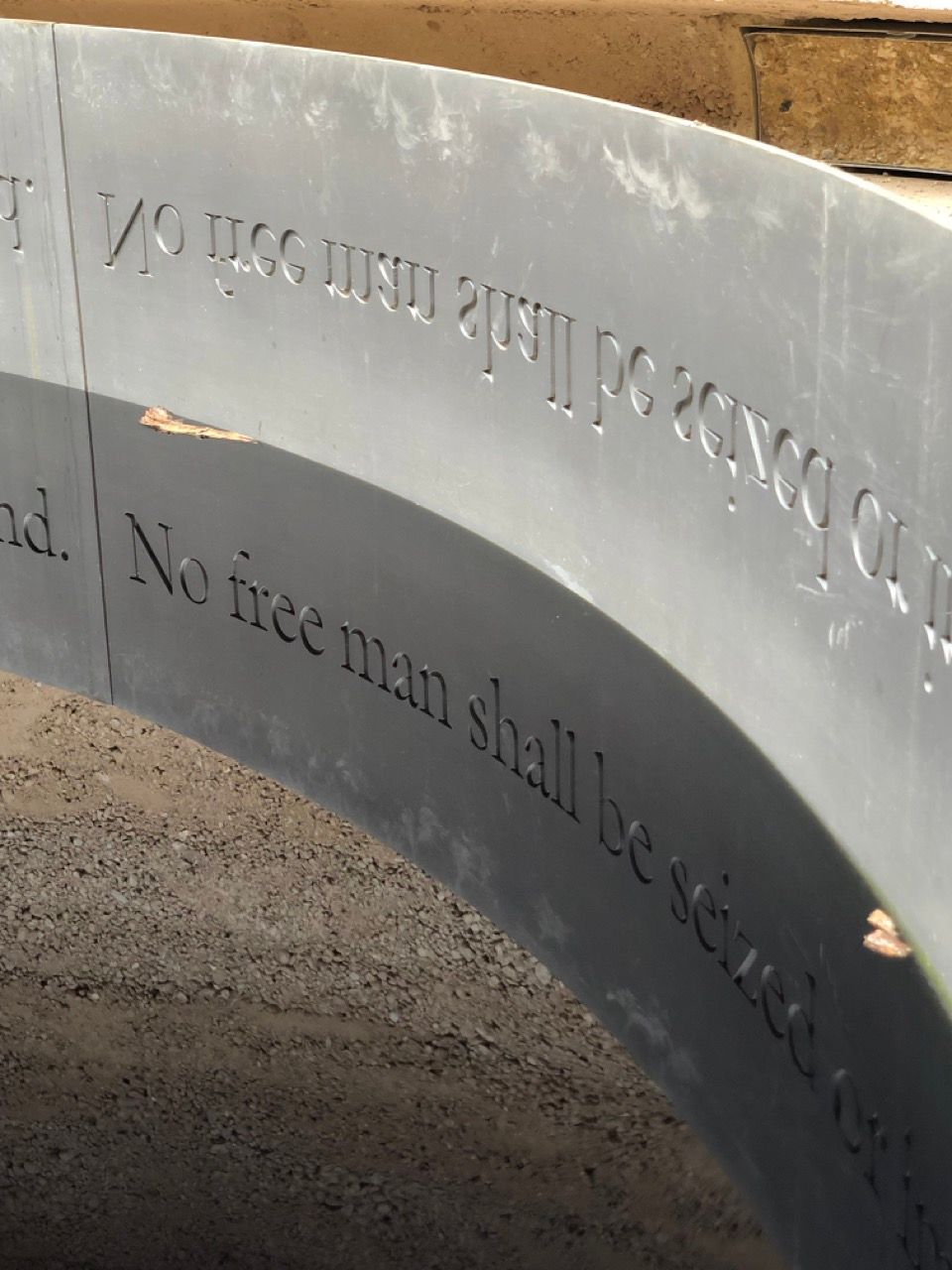
應該不難看到水面反射出正常文字寫法的特色。那些文字其實就是上面提到過的《大憲章》Clause 39的完整版本:
No free man shall be seized or imprisoned, or stripped of his rights or possessions, or outlawed or exiled, or deprived of his standing in any way, nor will we proceed with force against him, or send others to do so, except by the lawful judgment of his equals or by the law of the land.
創作Writ in Water的藝術家,Mark Wallinger, 評論道:
In Writ in Water, the use of reflection to make the text legible plays against the idea of a law written in stone. Magna Carta curtailed this divine right and issued the first secular writ.
Keats though despairing of his legacy was to become one of the immortals and his words live anew when learnt and repeated by every succeeding generation. Similarly, although Magna Carta established the law and the nascent principles of human rights, the United Kingdom has no written constitution. What seems like a birthright has to be learned over and over and made sense of. Whether the words are ephemeral or everlasting is up to us.
在2015年慶祝《大憲章》面世800週年時,另一件藝術品,The Jurors,被建構在Runnymede的草地上。
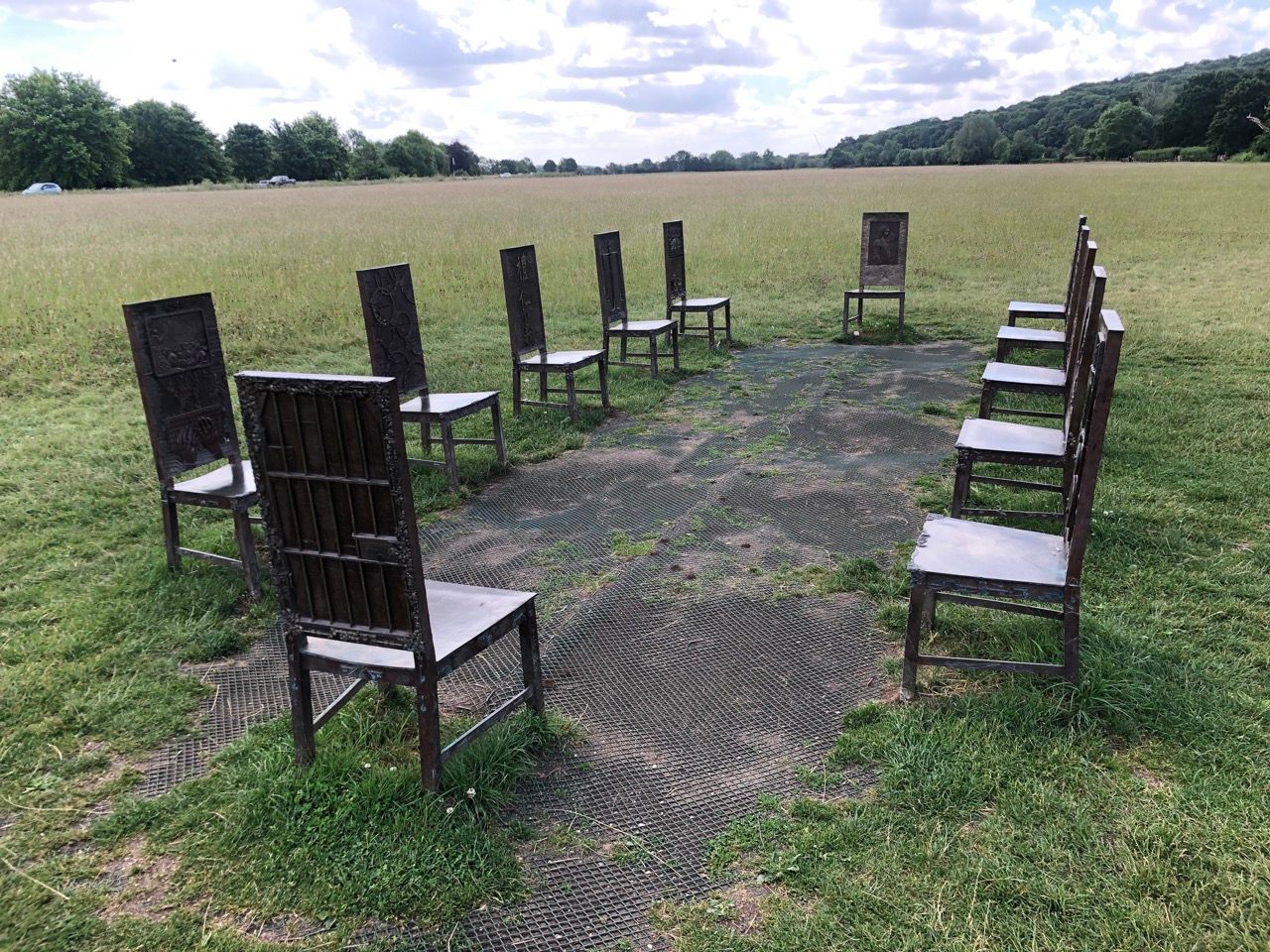
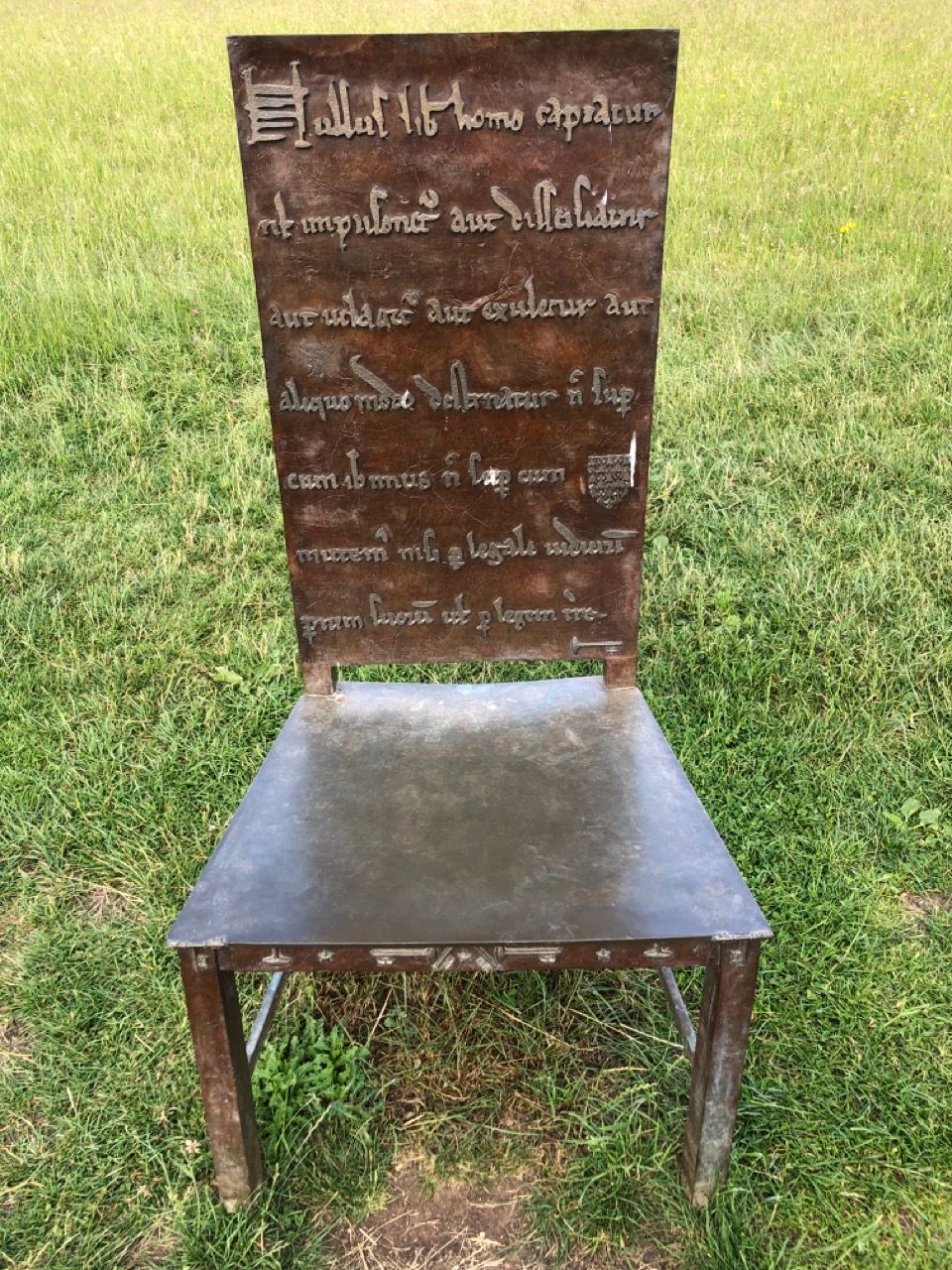
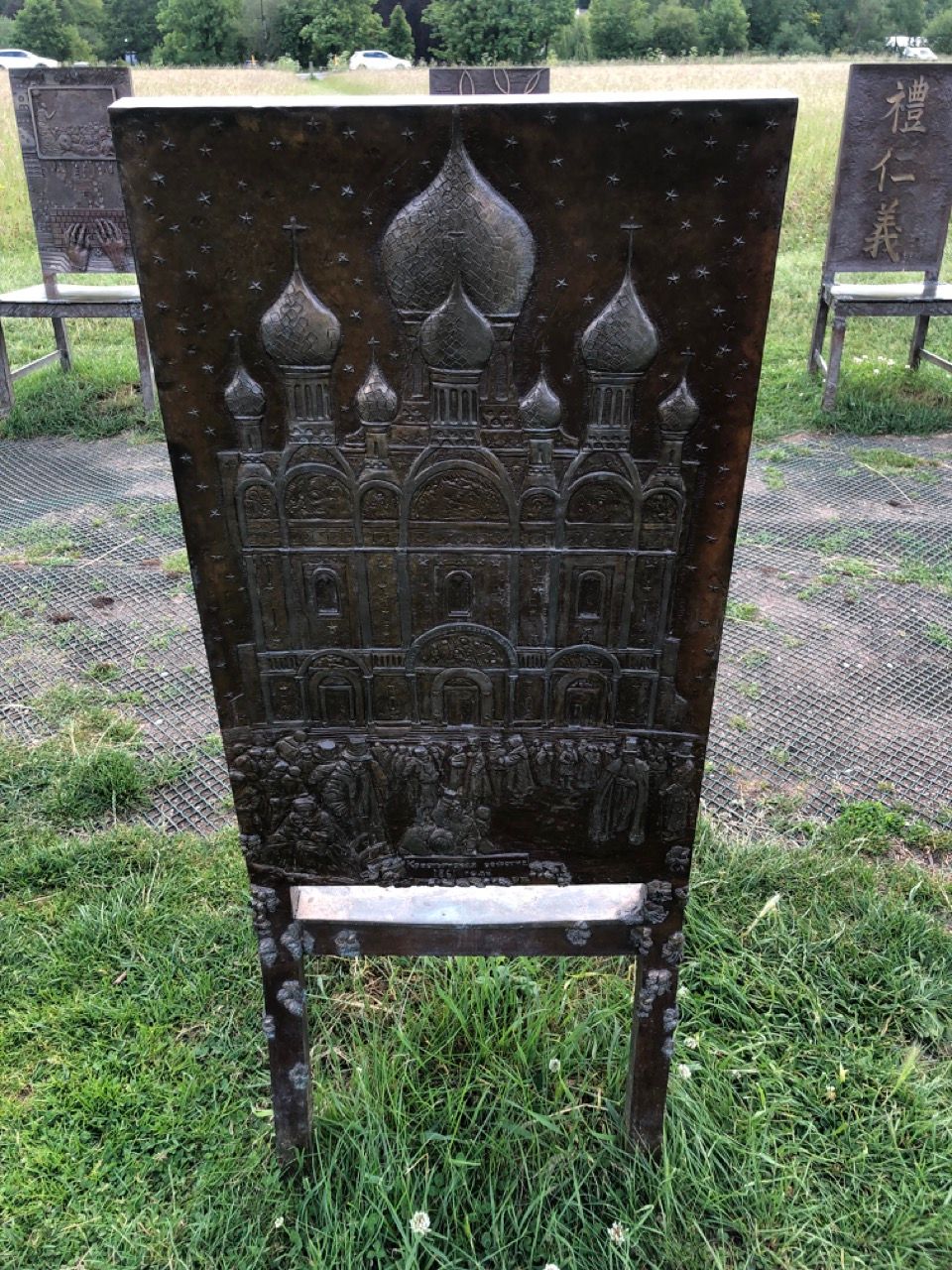
12張金屬椅子,以上面形式排列,每張上面有特別的圖像或文字,皆與爭取自由、公義等的理念有關;詳細解說可參考此網站。
Ankerwycke是與Runnymede隔著泰晤士河的對岸地方(那裡泰晤士河很窄),那邊有一位見證《大憲章》封印的「老人家」,仍然在生,而當年此老人家已經極老,因為,那時——超過800年前——已經約1700歲了!
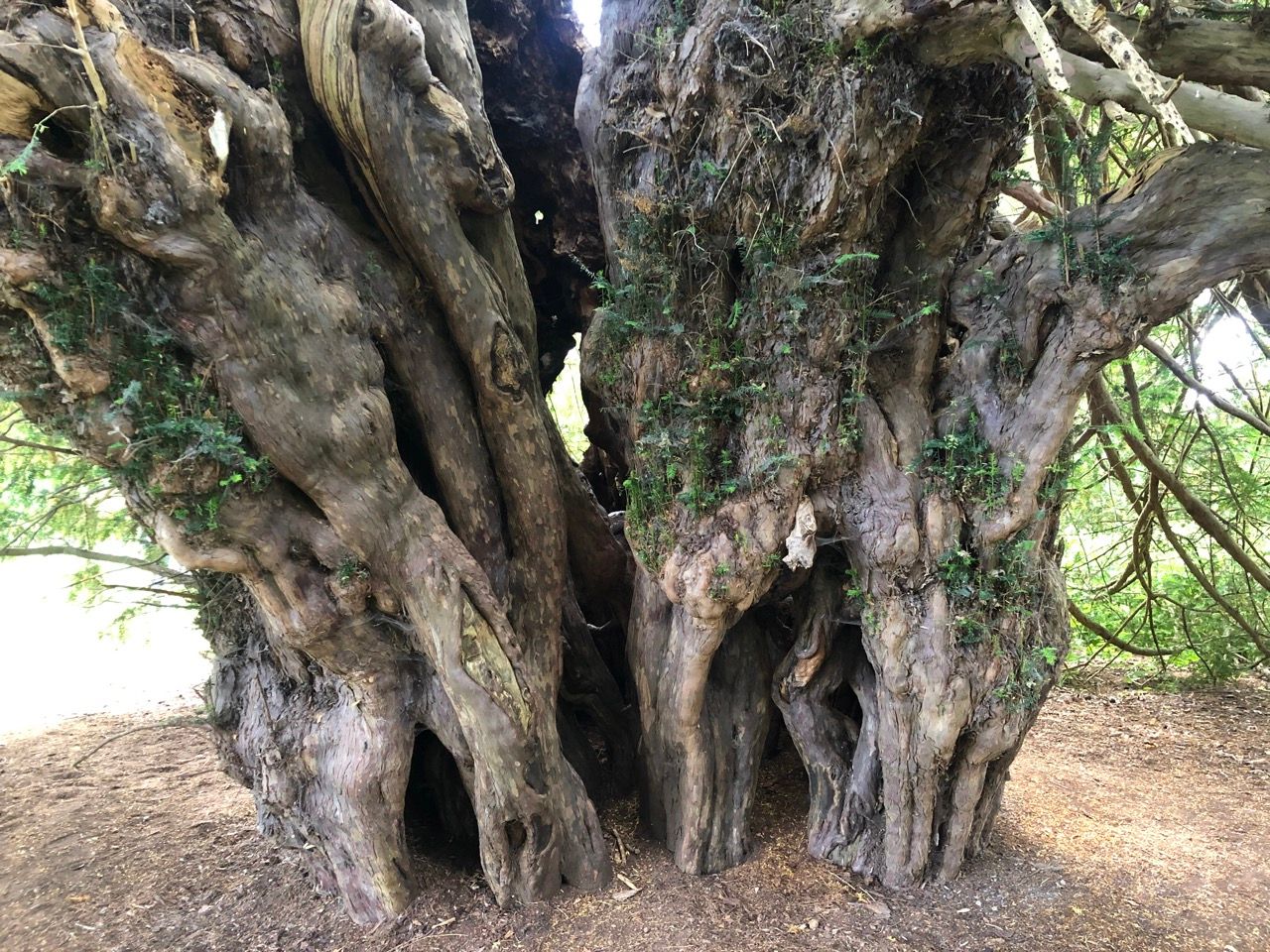
就是這棵古樹,The Ankerwycke Yew。不知是否有關當局刻意安排,這位老人家旁邊站了一位後生仔。

根據我自己的觀察——主要看樹葉,我斷定老人家和後生仔是同一品種的樹;所以,對比一下兩者的樹幹,便會領悟到,老人家真的很老了!
Like my work? Don't forget to support and clap, let me know that you are with me on the road of creation. Keep this enthusiasm together!